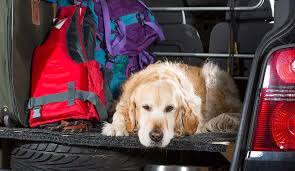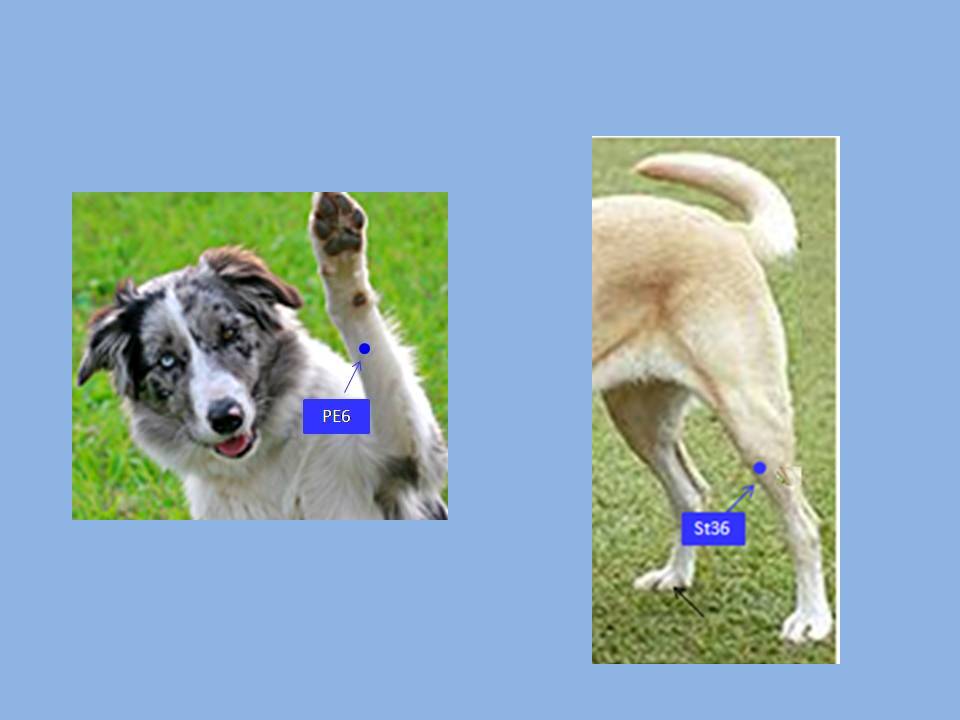
Summer is almost here, and for a lot of families they have one or more trips planned for the break. If a car trip with your pup is in your future these tips and points may help.
Here are some great tips from Dr. Karen Becker :
Most dogs don’t get carsick on an empty stomach, so make sure there are several hours (at least two) between her last meal and a ride in the car. Don’t withhold water, however.
And keep in mind this may or may not work for your pet, as some dogs need a little something in their stomach to prevent motion sickness. If your pet dry heaves or vomits bile in the car several hours after eating, before your next outing, try giving her a couple tablespoons of food or a few treats to see if she does better with something in her tummy.
- If your dog travels in a crate (which is the safest method of canine travel), move it from spot to spot in the car to see if the location of the crate makes a difference in how he’s feeling. Some dogs do best if the crate is placed in the rear compartment of an SUV. Others do well on the back seat. Some small dogs prefer their crate to sit on the floor of the front passenger seat where they can see the driver, but not much else. (This location is typically fine in colder weather, but be careful during the summer months, as forward compartment floor space can heat up quickly.)
If you use a harness or other type of restraint, again, try moving your dog from seat to seat if possible to learn where he feels most comfortable.
- Change your dog’s perception of traveling in the car. Pick a place close to home (no longer than a 10 minute drive from your house) that your dog enjoys. It could be the dog park or a nearby hiking trail.
Either bring someone along to calm your dog while you’re driving, or speak gently and reassuringly to him along the way. Once you reach your destination, devote your attention to your dog, playing or hiking with him, and make the outing fun for him.
On the ride back, again, do whatever works to calm your dog’s nerves. Once you’re home, have another vigorous play session and then let him rest. Repeat this routine at a minimum once a week so your dog learns to associate car rides with fun destinations and playtime with you.
- Stop frequently on long trips, as some dogs need breaks to prevent motion sickness. A good guideline is to stop after an hour or two and let your dog out (on a leash, of course) to relieve himself. You can also offer him a drink of water or some ice chips to chew.
- try Bach Flower essences such as Scleranthus, Rock Rose, or Rescue Remedy; offer ginger root a few hours before traveling.
- Also consider trying a variety of homeopathic remedies based on your pet’s particular symptoms, including Cocculus, Argentum, Ipecac, and Aconitum.
- Try a T-Touch anxiety wrap. (Video demonstration).
- This one may seem a little weird, but it can’t hurt to give it a try. As you’re driving along, point out scenery and other animals to your dog if she’s able to see out the window. Call her by name in an excited voice, and point or turn your head in the direction of the thing you want her to notice.
She may or may not catch on initially, but dogs that ride around a lot with their owners often wind up looking like little furry people as they gaze out the window and take in the sights. The idea with a stressed or potentially carsick dog is to involve her in her surroundings, generate a little pleasant buzz in the car, and provide a distraction for her.
- Consider driving with the windows down as much as possible (not all the way down, just enough to let fresh air in). It’s not a great idea to allow your dog to stick her head out the window, but if it seems to help her feel more comfortable, make sure she’s very securely harnessed in, and invest in a pair of “doggles” (protective eyewear for dogs) to protect her eyes from sudden rushes of air, bugs, and flying debris.
For the full article click here http://healthypets.mercola.com/sites/healthypets/archive/2015/08/28/dog-car-sickness.aspx
If you have a pup that does not do well in the car, or has motion sickness or gets a little dizzy these two points are very beneficial. In addition if your pup has vertigo these points are also a great help.
If car trips short or long are not fun for your pup try doing these points before the ride and if there is a second person in the car possibly during the ride and see if it helps.
Note that any sudden onset of dizziness or staggering should be checked out by your Vet immediately as it may be a far more serious issue than motion sickness …
The choice of acupuncture points is consistent with Traditional Chinese Medicine (TCM) theory. PC6 and ST36 are indicated for the treatment of nausea, vomiting, hiccups among other things
Click on the link below as it explains how and why these points work… It is quite intersting
PC6 is located 2 cun above the transverse wrist crease between the tendons of the palmaris longus and flexor carpi radialis. PC6 is a luo point and a confluent point of the yinwei channel.
ST36 is 3 cun below ST35 and is one finger breadth from the anterior crest of the tibia in the tibialis anterior muscle. Or find the front of the knee and slide your finger down into the little groove on the lateral side of each knee
